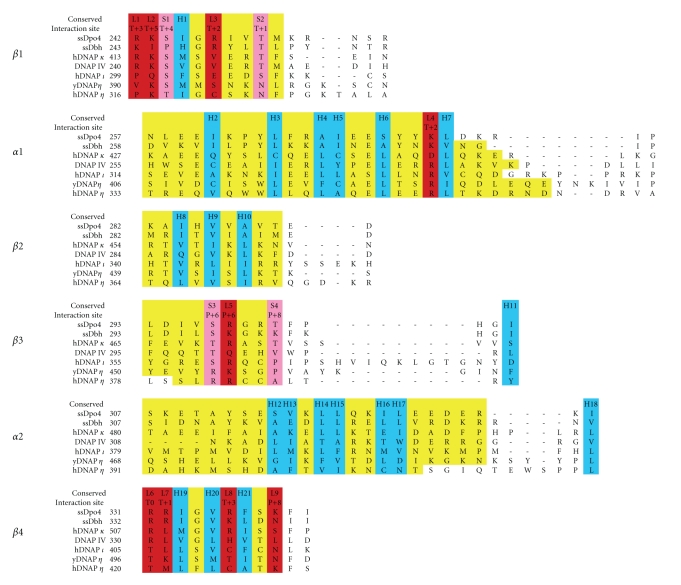Figure 4.
Amino acid alignment for the little finger domains in cases where the alignment can be assigned unambiguously based on X-ray structures of Y-family DNAPs. Alignments were done with FATCAT [105] and MAMMOTH [106], which agreed with visual alignment. The six rows show the four β-strands (β1–β4) and the two α-helices (α1 and α2). Yellow highlighting indicates residues in each secondary structural block. Blue highlighting shows the twenty-one hydrophobic residues (H1–H21) that make up the hydrophobic core of the little finger domains. Red highlighting shows consensus lysine/arginine/asparagine/glutamine residues that bind with phosphate-oxygens (L1–L9). Pink highlighting shows consensus serine/threonine residues that bind with phosphate-oxygens (S1–S4). “Interaction Site” refers to the nucleotide position of the phosphate-oxygen with which an amino acid is interacting, where “T” refers to template and “P” refers to primer, and the numbering refers to the duplex portion of the DNA. The interaction site is not always the same in all structures in the case of amino acids with long side chains.

